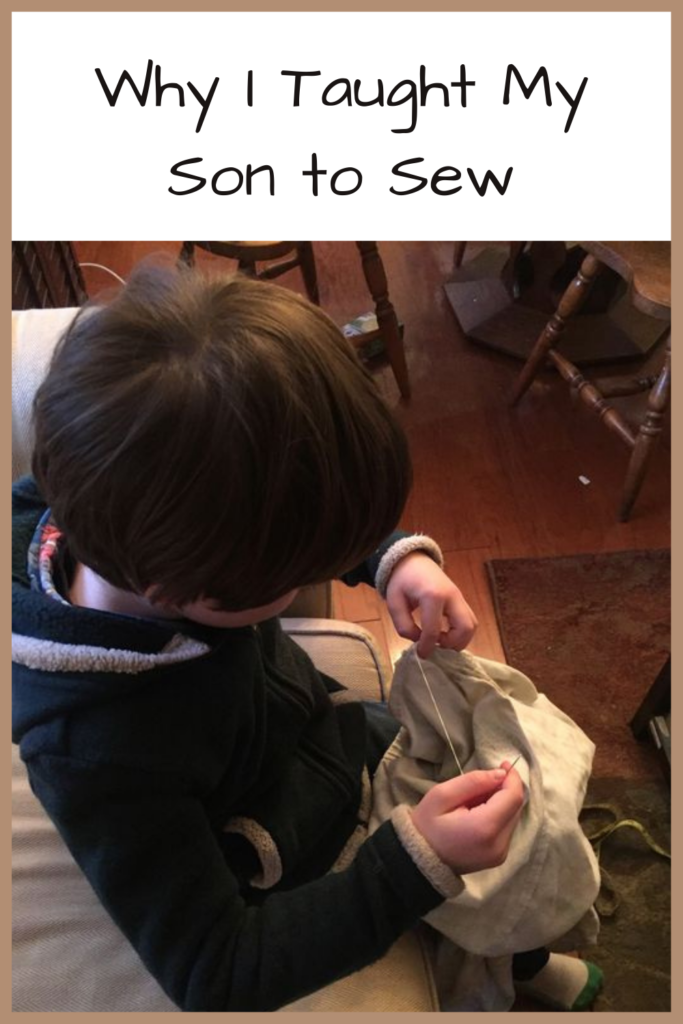
Reaching up in my closet for my sewing bag, I asked my then-six year old son, “Do you want me to teach you how to sew?”
“No,” he said, with an edge in his voice of “And why would I?”
But as I settled down on the couch, his attitude shifted. He wandered over, asking, “Can I see what you’re doing?”
“I’m sewing,” I said, indicating the clothing on my lap. As I threaded the needle, then stitched close a hole, he watched intently.
A few weeks later, I returned to the couch, sewing kit in hand. From the beginning, he was right beside me. After watching me mend one of his socks, he asked, “Can I do it?”
Smiling, I said, “You want to learn?” He nodded. I showed him how to put the needle through the two layers of fabric and thread it through the side. Then I handed over my current project – a pair of pajamas pants. Not too difficult; not a big deal if he messed them up. He took the needle attached to the thread and went to work.
Fifteen minutes, many stitches, and one needle-poked finger later, he was done. I had provided guidance, but he had done it himself, even tying it off at the end. The stitches were large and uneven, but they were made with pride.
“Nice job!” I praised, giving him a high five. He grinned.
While I could have done the sewing project after the kids went to bed, I pulled it out on a chill Sunday afternoon with the hopes he’d be interested. Even if he wasn’t, I wanted him and his brother to see me doing it. I wanted to demonstrate that our family values our possessions enough to repair them rather than throwing them away or getting replacements. People who are heavily invested in consumer culture are less happy, less satisfied with their own lives, less generous, and more selfish. In a social science experiment, some kids watched an ad for a “hot new toy” while others didn’t. Afterwards, both groups were asked if they wanted to play with a “nice kid” who didn’t have the toy or a “not so nice” kid who had it. Of the children who watched the commercial, 65% would play with the not-so-nice kid with the toy, while only 30% of the kids who didn’t watch the commercial picked him.
All of that throwing away old stuff and purchasing new stuff also creates a lot of environmentally unsustainable waste. It feeds the systems that rely on exploitive labor and throw-away culture. Making do and fixing what we have is one way to short-circuit the “buy buy buy” attitude.
The fact he wanted to learn to sew – and jumped right in – exceeded my expectations. Unlike my home economics class where I sewed a pillow in the shape of a music note, mending is a valuable life skill. Instead of needing to have someone else do it, learning to sew gave him a sense of independence, competence, and control that kids crave. Doing it himself circumvented the idea that it’s “girl’s work,” pointing him to the idea that it’s “everyone’s work.” Of course, he also contributed to meeting the household’s needs. If we want gender equality in the future, we need to set that foundation now.
While I don’t expect him to sew his own clothes – I don’t either – I appreciate the interest and effort he put in to maintain ours. Fostering a sense of independence, responsibility, and the ability to contribute will last much longer than the repairs to a pair of pajama pants.